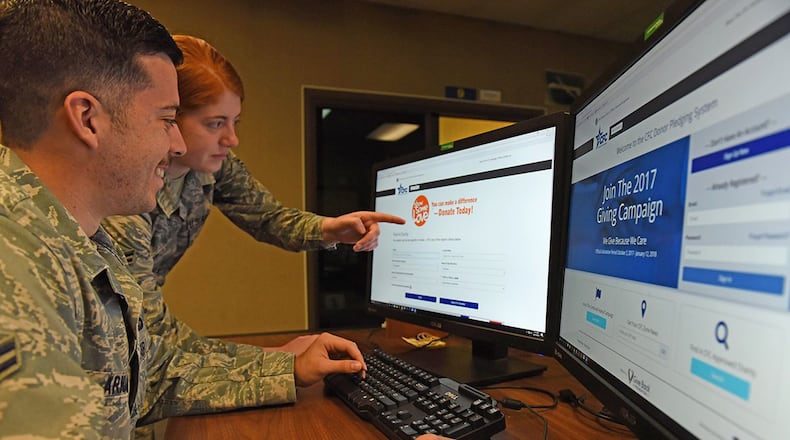Q: The local 2018 Combined Federal Campaign kicked off last week. Why has the OPM made changes, and what are they?
Himelhoch: It’s not the start we anticipated, but it’s important we support the community through not just dollars but volunteer hours and raising awareness about the thousands of organizations locally, nationally and internationally that keep vital the communities where we live and work.
OPM’s new regulations will improve donor participation, CFC infrastructure and standards of transparency and accountability. The changes are in accordance with recommendations made by the CFC-50 Commission, a panel that studied improvements to the program in light of its 50th anniversary in 2012.
The local campaign is now officially called the Ohio Combined Federal Campaign, Miami Valley District.
Q: How long does the campaign run? What is this year’s theme?
Himelhoch: Officially our local push will be until Nov. 22. OPM is allowing pledges to be made through Jan. 12, 2018.
The global theme this year is “Show Some Love.” There isn’t anything that better states our strategy and focus. We saved money on our 2017 materials, to be good stewards of our resources, by continuing to use this theme.
Q: How can people participate?
Himelhoch: Donors can pledge electronically and by using paper pledge forms, which will be available in a couple weeks. Pledges can be fulfilled by payroll deduction, as well as credit and debit card giving, which is a one-time gift. Electronic pledges, including credit/debit, can be made through OPM's new site: cfcgiving.opm.gov.
Q: You’ve had the expertise and organizational prowess of several “loaned executives.” Who are they and what do they bring to the table?
Himelhoch: Chantaé Gray of the Air Force Research Laboratory, and Airman 1st Class Jeremy Tobar of the Air Force Life Cycle Management Center, are our dynamic loaned executives. They’ve brought great expertise, knowledge of our federal community, customer service, organizational skills and flexibility. They have an unflappable spirit and tremendous camaraderie. And, we appreciate their home offices making them available for this important endeavor.
Q: How are fundraisers and events that have happened in the past being handled?
Himelhoch: Under CFC’s new regulations, fund-raisers can no longer be held. Campaigns no longer have the capability of handling cash or personal checks. This makes so much sense because we need to focus our attention on raising awareness of the programs and services provided by charities, especially how they benefit individuals and our communities.
Q: What kinds of needs for CFC donations are being seen in the Miami Valley, regionally, statewide, nationally and internationally? Is the need increasing?
Himelhoch: There are always needs and I feel recent weather-related tragedies drive home my sentiment. First and foremost, any disruption takes an unimaginable toll on old and young alike, families and emergency responders. The requirement for basic necessities – shelter, food and medicine – is critical; the need for animal welfare assistance escalates; our environment is adversely affected; fine and performing arts organizations have been decimated. It is important that the communities where we live and work have the support needed to restore their vitality.
Q: Why should people consider donating if they feel like they have less money and have their own concerns?
Himelhoch: I would like people to donate because they want to, and to be aware that no gift is too small. I’m a firm believer that people should give because they want to, whether that’s in volunteer hours, cleaning out a closet and donating a toy that’s not being used or contributing money.
Q: I understand you have been acting as a CFC volunteer since mid-August, while OPM was making its changes and transitions for the campaign. Why has it been so important to you to do that when you have been a paid professional previously?
Himelhoch: The steps OPM is making to modernize CFC are far-reaching and have spanned a much longer timeframe than ever anticipated. I have felt a deep sense of responsibility to help with the local and statewide transition. Volunteering is invigorating and my way of helping to support our community.
Q: Is there anything else you’d like people to know about the CFC?
Himelhoch: We have a dynamic group of volunteers who are so committed and we couldn’t do this without their leadership, enthusiasm and support – from our loaned executives to agency campaign chairs, co-chairs and their key workers. We thank them because their commitment is key to our goal to raise awareness.
About the Author
